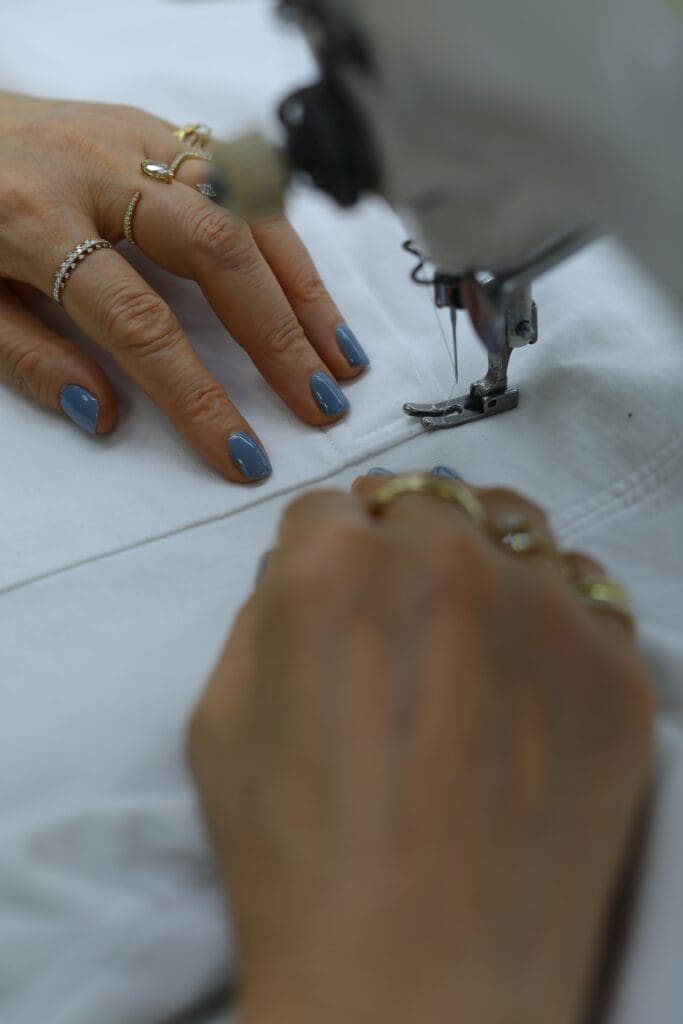Reduce. Reuse. Recycle. What about repair? It’s an important element for those curating a more eco-conscious closet. The benefit is twofold: clothes and accessories are kept out of the landfill, and our need to purchase new things is lessened. With hashtags like #visiblemending and #clothingrepair clocking well over 25 million views apiece on TikTok, it’s safe to say that consumers are taking note. If you’re no seamstress, then trust your beloved clothing items to one of the shops across Canada dedicated to restoration and repair.

“Business is booming,” says Colleen O’Reilly, owner of Calgary’s The Grey Spa, which specializes in leather—and, specifically, designer handbag—repair. Her customers love her for her ability to source vintage hardware and other very specific pieces to bring their bags back to life. “Leather is so resource-heavy,” she says. “The amount of water … it’s an animal by-product. I just thought it was really important to keep these things in use as long as possible.”
At Edmonton Bag Spa, owner Yardley Santos Uy has similar feelings. “It’s about promoting sustainable fashion,” she says, adding that a designer bag is an investment. “You don’t want to be throwing away expensive stuff. … They deserve a second chance.”
Those with bags in need of resuscitation, or even just a little love, may be surprised by what can be repaired. O’Reilly warns that if there are rips and tears, the bag may be beyond help. But don’t despair, “Most everything else can be fixed,” she says. “Scratches, corner scuffs. If seams are coming undone, hardware tarnishing. Staining can be usually fixed or dyed over.”
“When you do repair it, it comes back as close to original as possible,” says Mustafa Ali, owner of Toronto-based Kaner’s Handbag and Shoe Repair. That attention to detail is likely why designer labels trust his team to repair their damaged goods. “Gucci, Burberry, Celine, YSL, Fendi—all those stores have been dealing with me the last 30 years.” He explains that working with brands of that calibre means the finished product should never look repaired. “Sometimes it gets really challenging because you have to come up with a solution,” he says. Don’t let the high-end clientele dissuade you from dropping off your own pair of pumps—they work with walk-in customers, too. “As long as it can be repaired, we can help.”
Bags aside, Penny Forde, owner of Toronto Denim Repair, mostly gets “well-loved vintage denim, or a pair of jeans they’ve had for years and just can’t let go.” Before starting his business, he cut his teeth at Dutil repairing high-end denim brands. As a queer transgender man, Forde says, “I can see both sides of what works for the body. I really empathize with people who are just like, ‘I love this pair of jeans. Can you please fix it?’”
And so he offers a few styles of mending. “Lately I’ve been dabbling into visible mending, like sashiko or boro. They’re Japanese mending techniques … special thread and needle and doing hand-stitching.” But more often than not clients want that perfect pair back the way it was. In those cases, he says, “I blend the thread so you can’t see it. Or it’s not as noticeable.”
In Vancouver, Klean Sneaks is keeping kicks as bright and fresh as the day they were lovingly removed from the shoebox. Justice Kennedy, one of the shop’s owners, explains they are “really heavy in the sneakerhead community: people who see value in their sneakers and collect sneakers, and don’t want them to go to waste in the back of their closet and would love for them to be refurbished and looking back to tip-top shape.” Klean Sneaks specializes in deep-cleaning, which ranges from a good soak and scrub to paint touch-ups, and even what Kennedy calls “the ice-box treatment”: a revamped fridge rigged with UV lights to tackle discolouration. “We like to see how much joy we put into people’s closets,” he says. After all, if what’s old is new again, you’re always guaranteed to be in style. —Jill Von Sprecken

Be the first to comment